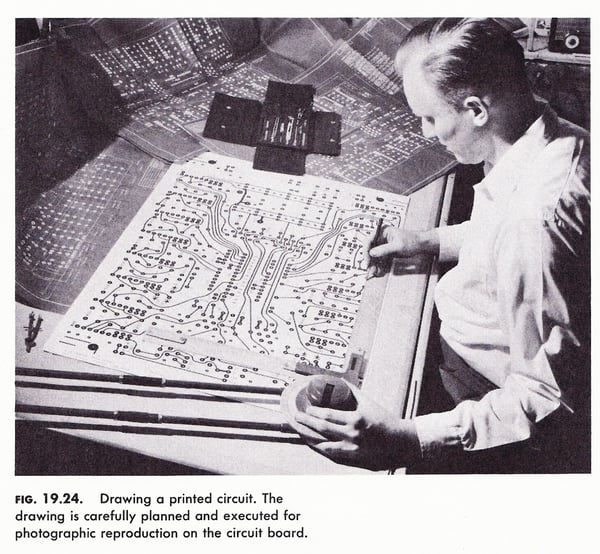How to Manage Paper Engineering Drawings in a Digital World
Paper engineering drawings? Really? I thought everyone used CAD these days. Haven’t we advanced to 3D models? Well, yes….and….no.
While newer designs are almost always done in CAD these days -- often in 3D CAD -- there is still a vast legacy of paper drawings that reside in flat files in factories, corporations, engineering firms, mining companies and other strongholds from coast to coast.
From A Manual of Engineering Drawing for Students and Draftsmen, 9th Ed., by French & Vierck,1960
These legacy files filled with years and years of engineering documentation represent thousands upon thousands of hours of work by technical draftsman. The original goal of these drawings was to represent an engineering design in the most accurate and concise way possible. And, guess what? These drawings do just that. They were accurate and concise when they were created, and they remain accurate and concise today, unless…
There’s a fire.
Or, a flood.
Or, a theft.
Or something as simple as a coffee spill.
Despite the potentials for disaster, much of the engineering community has continued to refer to and use these so-called legacy drawings, despite the wrinkled paper, dirt smudges, or in the case of mylar, actual drawing distortion caused by inconsistent storage temperatures. It seems that paper engineering drawings are like favorite old books – could be available digitally, but much more familiar in their original form. And, after all, referring to paper drawings works, doesn’t it? So, why fix something that doesn’t need fixed?
Well, the horse and buggy worked, too didn’t they, so why are you driving that modern crossover equipped with GPS, Bluetooth, backup camera, Sirius radio and all of the other modern technolgies? We think you’ll agree that there’s a huge difference between something that “works” and something that makes life simpler, easier and more efficient.
The Big Problem with Paper
Even if your paper drawings escape fire, flood and coffee spills, the technology of engineering design has changed. Today’s young engineers are taught on digital CAD systems. Classically trained engineers are nearing the ends of their careers. This means that the interpretation of paper engineering drawings is becoming something of a lost art, along with a number of other paper-related activities, such as reading maps and cursive hand writing.
Other problems associated with paper drawings include:
- The deterioration of paper over time
- Need for making copies if you need to send a drawing out
- Difficulty in retrieving specific information from paper
- Poor source for collaboration and communication
- Cumbersome storage requirements
- High potential for loss or damage
- Cost of storing, locating and accessing
- Higher likelihood of error in final product
With all of these negative aspects to maintaining and using paper legacy drawings, perhaps the question is not “How do you manage paper drawings in a digital world?”, but rather, “Why would you manage paper drawings in a digital world?” Learn more with our whitepaper below:Whitepaper:
3 Strategies for Optimizing
your Paper to CAD Conversion

